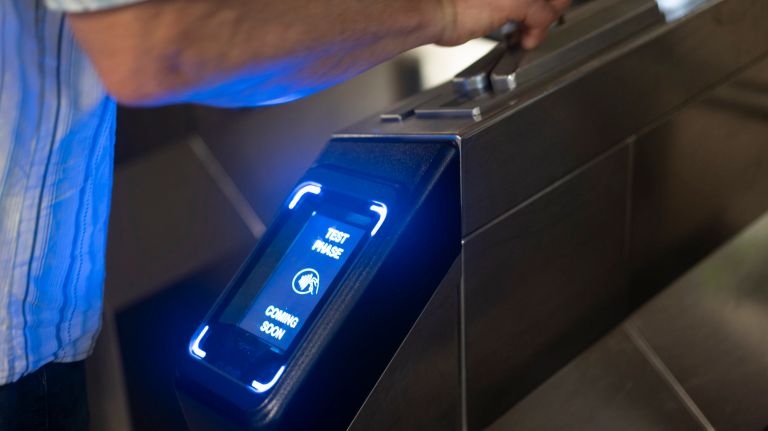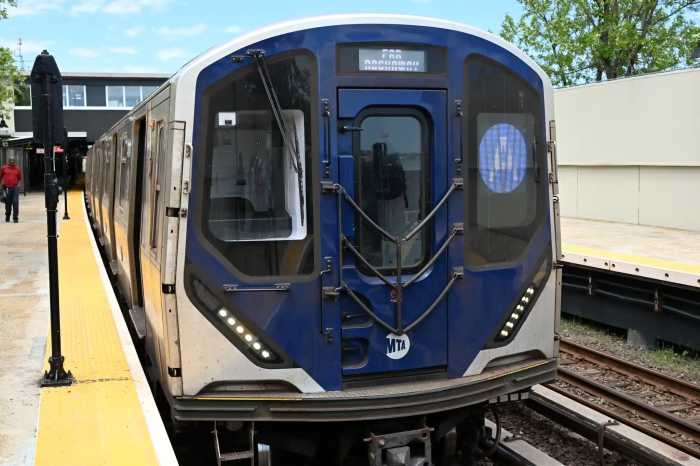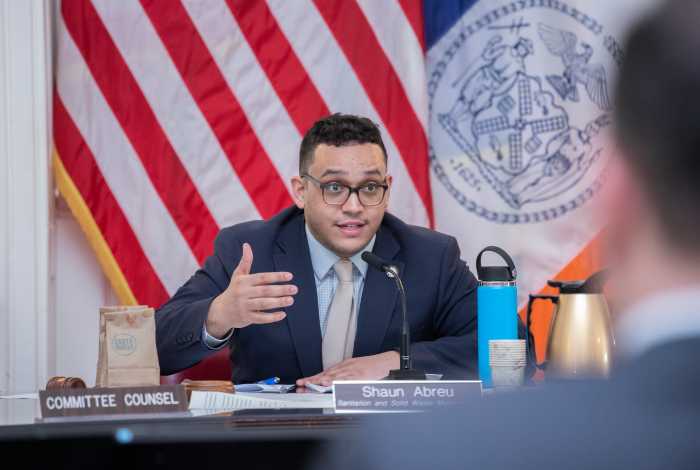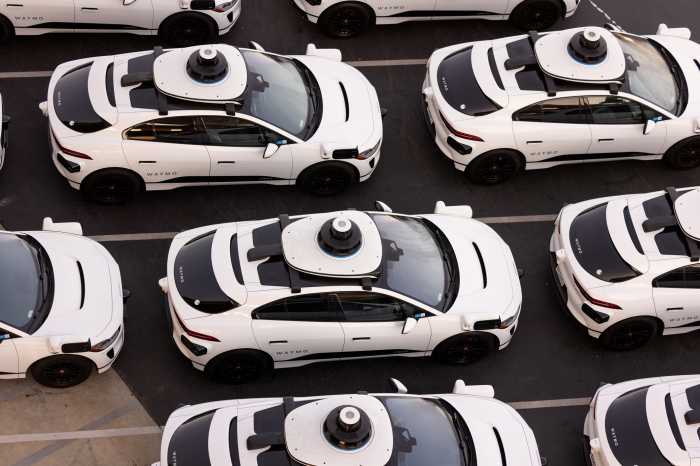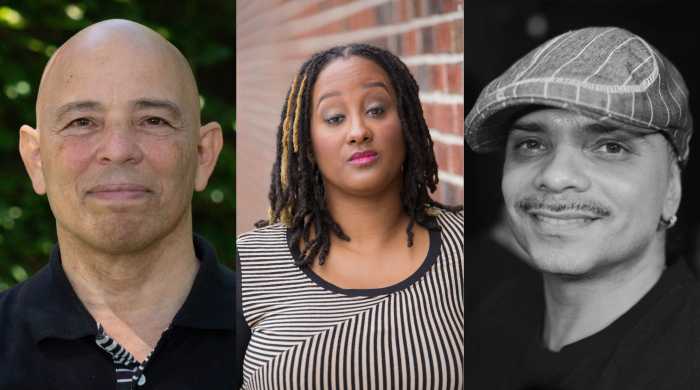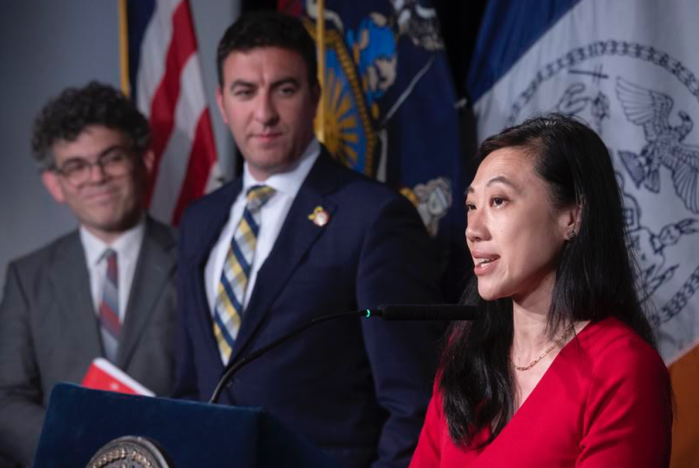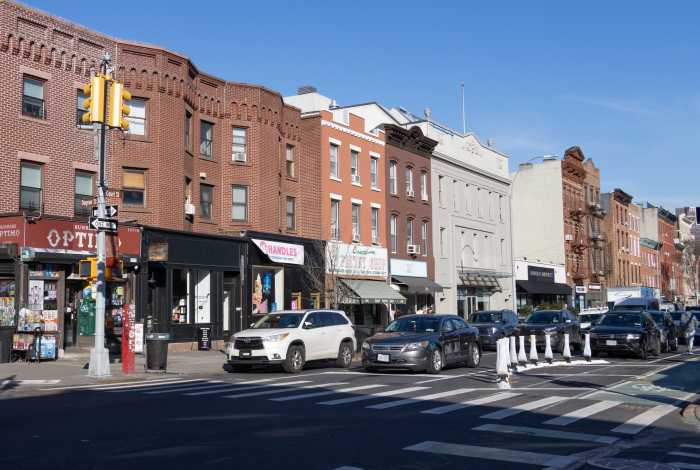
Out with the MetroCard, in with OMNY.
The MTA will begin the slow rollout of its new fare payment system, short for “One Metro New York,” this Friday around noon, marking the start of the long fade out for the iconic yellow-and-blue fare card. Riders will eventually be able to use a host of options — including mobile wallets, phone apps, bank cards and/or a new proprietary card — to tap into the MTA system.
But the first phase will be very limited — both in terms of its availability and features. It will include 16 subway stations along the 4, 5 and 6 lines in Manhattan and Brooklyn as well as all Staten Island buses.
“We are excited for our customers to begin using our new OMNY payment system, which will make paying your fare faster and more convenient, while easing congestion in stations and on buses. We’ve been working hard to ensure the system is ready for its limited public launch, and can’t wait for Friday at noon when the system goes live,” said MTA Chairman Pat Foye in a statement. “Customers will always have a cash option but the move to contactless payment meaningfully modernizes our way of doing business and is a win for our customers.”
OMNY will launch with only two options for payments: contactless bank cards and mobile wallets. Staten Island bus-to-subway commuters will be able to take advantage of the same free transfers they receive today, but the initial program will only include a pay-as-you-go option — that means no weekly or monthly discounts just yet.
The limitations mean the pilot will only be truly practical for a very limited group of commuters, including some Staten Islanders and people living off the 4, 5 and 6 trains between Grand Central-42nd Street and Atlantic Avenue-Barclays Center, the stretch where the first tap readers have been installed.
The MTA is starting to catch up with other tap-based transit systems around the world, though officials are intentionally taking things slowly in order to work out any potential kinks with the new system ahead of a mass integration. Transit advocates eagerly anticipate the launch of the program.
“It’s easy to use. You don’t even really have to take your card out of your wallet. And you’re going to be able to integrate it with your credit cards, your bank accounts,” said Lisa Daglian, the executive director of the Permanent Citizens Advisory Council to the MTA. “So all won’t be lost like it is now if you lose your MetroCard. You’ll have multiple options to pay.”
Still, like the way the MetroCard opened up the concept of free transfers, many believe that the true potential of the new fare system won’t be realized until the MTA and its board begin discussing the way OMNY can reshape the policies around how we pay for bus, subway and rail networks.
OMNY is expected to bring all-door boarding to buses, speeding up the time buses spent stuck at the curb, and a universal payment option for all the MTA’s services, including its commuter railroads.
The system also makes fare-capping possible, where the MTA could allow riders to continue using its systems for free if they reach a certain number of payments in a day, week or month — ending the debate about purchasing weekly or monthly cards and making those discounts more accessible to riders who wouldn’t otherwise be able to afford the upfront costs of, say, a $127 monthly MetroCard.
But Veronica Vanterpool, an MTA board member, said discussions around fare policies have not yet reached the board level.
“I see there is a good deal of opportunity for a lot of changes, like a seamless connectivity not just within our transit system but with other transit systems in the region,” she said. “That’s one key improvement from a regional perspective … it also makes it possible to look at other fare discounts, or variable pricing.
“Obviously, there is a lot of discussion that has to go into these options,” Vanterpool added, “but finally we have a system that can accommodate more than one fare price or one type of discount.”
The MTA issued a $573 million contract to Cubic Transportation Systems, which operates the MetroCard, back in 2017 to bring OMNY to New York. The project is moving ahead on time and on budget, according to the authority.
The MetroCard still has some years left. OMNY scanners will arrive in all subway stations and buses by the end of 2020. MetroCards won’t be completely phased out until 2023.
It’s not clear yet how many riders will try out the new system at the end of the week, but some riders were looking forward to the idea of not dealing with MetroCard machines or bad swipes.
“I am glad they are installing a new form of paying for the MTA, since machines are always broken when you need to buy or refill a MetroCard. Hopefully this will help with this problem,” said Gabriella Torres, 24, of the Bronx, a student at Hunter College. “With that being said, I feel like they will need to keep on top of this new technology, because if they’re anything like the machines where you pay for a MetroCard it’s going to be a mess.”
Linden Isles, 23, who commutes from Rosedale, Queens, to the Borough of Manhattan Community College, plans to try out the system, but said it didn’t make sense to rely on it every day just yet.
“I do plan on using it once or twice, but just for fun until they get it more functional because as is, it will only work for single rides, which isn’t the best decision to make financially,” Isles said.
Daglian envisioned big crowds Friday looking to try out OMNY.
“I think the way [the MTA] is rolling it out is smart … but who knows what will happen on May 31,” Daglian said. “So many people may want to do it that might be the first real test. It’s novel — I think there are going to be a lot of people who’ll want to use the system.”
With Oumou Fofana



